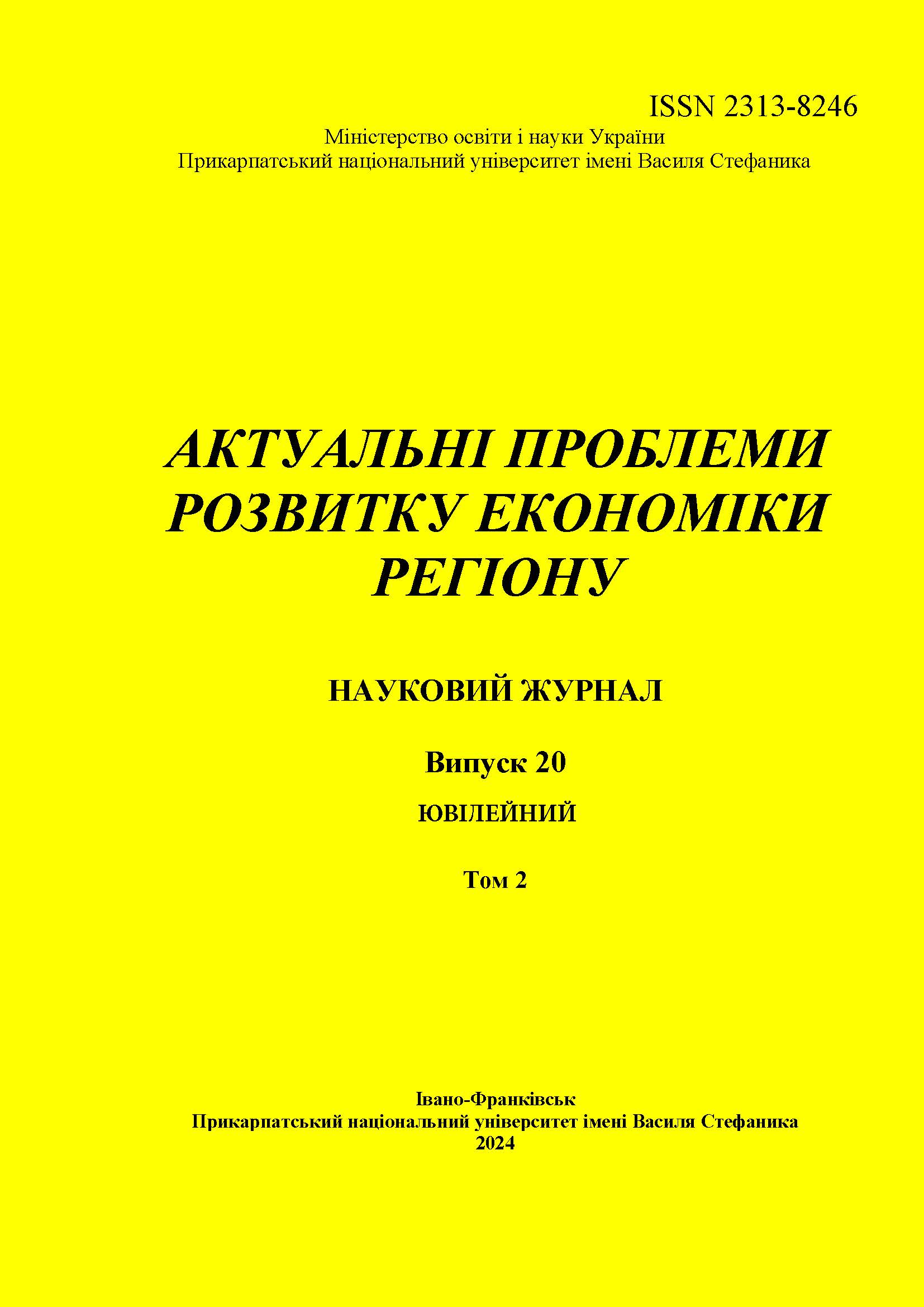R/S-ANALYSIS OF THE CURRENCY MARKET
DOI:
https://doi.org/10.15330/apred.2.20.245-251Keywords:
Currency market, exchange rate, financial sector, R\S analysis, pricing, Hurst indicator, multifractal analysisAbstract
The article substantiates the possibility of using R\S analysis for currency market research. The work is aimed at researching the currency market. The issue of research using R\S of the currency market is a new scientific direction. The study of the foreign exchange market, its regulation, influence on the financial systems of the countries of the world is gaining relevance these days. Foreign exchange transactions are often equated with the process of buying or selling securities. The paper analyzes the behavior of currency quotes on the foreign exchange market by determining the dynamic changes over time of the Hurst indicator, as one of the tools of R/S analysis, within the framework of the fractal market hypothesis. Calculations of the Hearst index were carried out according to the adjusted formulas of R/S-analysis, which allows to compare the value of the indicator on the foreign exchange market of Ukraine in different economic conditions. In a stable economic situation, the Hearst indicator tends to maintain its average value, while it is an indicator of events that directly or indirectly affect the state's economy and the rate of its national currency. The purpose of the work is to study the behavior of exchange rates of currency pairs by monitoring the Hurst indicator, as one of the tools of fractal analysis, within the framework of the fractal market hypothesis. Forecasting the future behavior of exchange rates is very important, as it allows to reduce currency risks and ensure the improvement of the effectiveness of various decisions in the field of international financial management. The Hurst indicator is widely used in time series analysis due to its stability. Its calculation requires minimal assumptions about the system being studied, and based on it, time series can be classified by memory type and depth. It can distinguish a random series from a non-random one. The paper provides an example of calculating the Hurst index using Mandelbrot's method. This indicator is used as an indicator of the long-term memory of time series. Hurst's indicator as a tool for fractal analysis of systems allows you to determine the degree of persistence of financial series, the presence of long-term memory in the currency market. Daily data on the exchange rate of the hryvnia to the dollar and the euro are taken from the official website of the NBU. It turned out that periods of stability of the hryvnia exchange rate relative to other currencies are observed in different years. Accordingly, the fractal dimension of the series also changes. For most periods of the hryvnia exchange rate, anti-persistent series were found, that is, when the decline is most likely replaced by growth. R\S analysis techniques analysis is a key tool for market analysis, which allows you to understand when and which assets should be bought and when to sell.
References
Burtnyak, І.V., and A. Malytska. “Simulation of stock market prising using the model CEV.” The actual problems of regional ecomomy development, 2021, pp. 41-47
Burtnyak, I.V., & I.S.Blagun. “Modeling the efficiency of bank functioning using financial flows.” Bulletin of the Khmelnytskyi National University, Economic Sciences Series, no.4, 2020, pp. 51-57.
Burtniak, I.V.”The use of methods of analysis of the operating environment to evaluate the efficiency of commercial banks.” Business Inform. no.11, 2020, pp. 309-315.
Burtnyak, I.V., & I.S. Blahun. “Models of analysis and assessment of banks' activities in the conditions of an unstable economic environment.” Bulletin of the Khmelnytskyi National University, Economic Sciences Series, no. 4, 2020, pp. 41-45.
Dmytryshyn, L.I., & O.S.Kushnir. “Modeling the assessment of the bank's economic capital as an integral measure of the magnitude of accepted operational risks.” Bulletin of the Khmelnytskyi National University, Economic Sciences Series, no. 1, 2017, pp. 39-43.
Dmytryshyn, L.I., & I.I. Blahun. Formation of management strategies of the banking system of Ukraine. Ivano-Frankivsk, V.P. Suprun, 2016.
Kashevskyi, R.M., & I.V.Burtniak. “Evaluation of the efficient operation of banks using the DEA method,” Materials of the 10th All-Ukrainian Scientific and Practical Conference of Young Cybernetic Economists "Economic Modeling: Problems, Trends, Experience". Lviv, 2022, pp. 68-69.
Kashevskyi, R.M., & I.V.Burtniak. “Study of the functioning of commercial banks based on the DEA method.” Materials of the XIV international scientific and practical conference "Modern problems of modeling socio-economic systems. April 6-7, 2023. Bratislava – Kharkiv, VSHEM – HNEU named after S. Kuznetsia.
Kushnir, O.S. “Implementation of a mathematical model for determining the level of operational risk of a credit institution.” Business Inform, no. 10 (465) , 2016, pp. 135-143.
Primostka, O. L.”Analysis of the efficiency of banks.” Finances of Ukraine, no.1(23), 2013, pp. 52–58
Younsi, M., & A. Nafla. “Financial stability, monetary policy, and economic growth: Panel data evidence from developed and developing countries.” Journal of the Knowledge Economy, no.10 (1), 2019, pp. 238-260. doi: 10.1007/s13132-017-0453-5
Downloads
Published
How to Cite
Issue
Section
License

This work is licensed under a Creative Commons Attribution-NonCommercial-NoDerivatives 4.0 International License.
- Authors retain copyright and grant the journal right of first publication with the work simultaneously licensed under a Creative Commons Attribution NonCommercial NoDerivs 4.0 Unported License that allows others to share the work with an acknowledgement of the work's authorship and initial publication in this journal.
- Authors are able to enter into separate, additional contractual arrangements for the non-exclusive distribution of the journal's published version of the work (e.g., post it to an institutional repository or publish it in a book), with an acknowledgement of its initial publication in this journal.
- Authors are permitted and encouraged to post their work online (e.g., in institutional repositories or on their website) prior to and during the submission process, as it can lead to productive exchanges, as well as earlier and greater citation of published work (See The Effect of Open Access)


